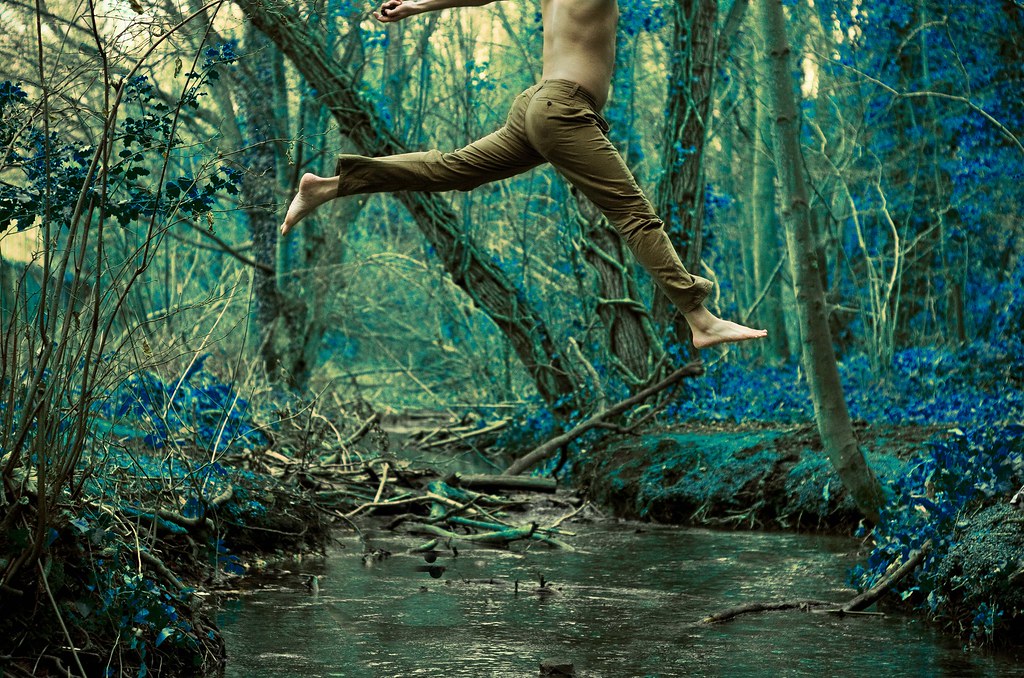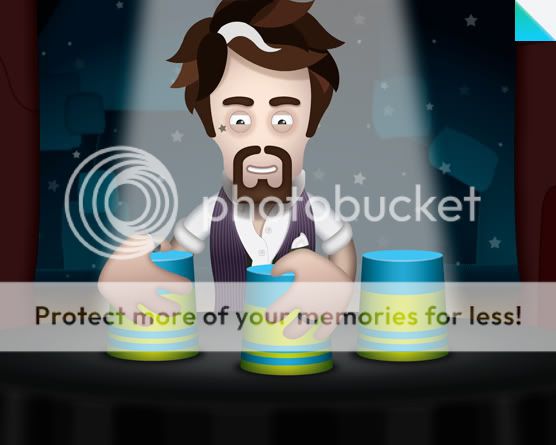Dear Lightspeed,
I have managed to knock off early so have more time to devote to your reply! I appreciated your comment be safe as I do a lot of driving in my line of work so it was very relevant thank you.
Looking at the posts, I realise that this is a very large topic for one man to attempt to clarify, however, bear with me and I will do my best in answering you. In order for me to feel I am making a valid point, I am going to have to start at basics please do not take this as a sleight on you, it just helps me think clearer.
I think Light's point is, he can't allow others having a different opinion from his.
All I can do is laugh at this little spin.
I mean dude, seriously : "
Anyways, I like it because I can already picture what the rest of the body was doing, without it being in the photograph."
Admit it. You were being funny, right?
Wait!!!!
Hmmm......since you already pictured it, " What was the rest of the body doing?
lol
When we are born and growing up, we are learning about our environment and our bodies within that environment. The human brain is bombarded with huge amounts of information everyday. In order for humans to function effectively when carrying out our day, our brain generalises to save time and energy. Eg, learning to open a door. A toddler will learn how to do this consciously, and then after repetition, this will become a subconscious learned skill. So as the toddler approached different doors, this generalisation will mean that they do not have to consciously think what is this and then how can I interact with this. When you or I approach a door, we dont even think about it, we just operate it easily. These generalisations help humans exist in an information rich environment. As we experience more stimuli, patterns form and more generalisations are established. Eventually we subconsciously assume the reality of our environment based on these experiences and learnings.
When I look at this picture I cannot see any bullets:
I did not see the gun being loaded, I do not even know if the gun is real, I do not even know that this is not some roleplay that the guy and his wife like to do before getting it on. But based on my experiences and learnings, when I look at this image, I assume that the gun IS loaded with bullets even though I cannot see them. To me this appears to be a reasonable assumption based on the information in the rest of the image. I am generalising to make sense of what I see.
Now look at this picture of a magic trick:
Do you just see a cartoon man and 3 cups? Literally of course you do. But do you also have the expectation that a ball is likely to be under one of the cups? Based on a generalisation this is what I expect. It seems reasonable as in all my experiences with three cups in similar situations, a ball or an object of some kind has ALWAYS been present. I cant see a ball, but my imagination is filling in the gaps based on my experiences.
Final example:
Now, can you see the driver of the green car? No.
Based on this image, is it reasonable to assume that the green car has no driver?
Do you think that, even though you cannot see the driver, you can think how he is feeling in this photo? Ballpark will do.
Now lets look at my original photo:
 A leap of faith
A leap of faith by
The Paul Reid, on Flickr
So when Molested cow said
Anyways, I like it because I can already picture what the rest of the body was doing, without it being in the photograph.
They are actually saying that based on their experiences of people jumping, they can generalise and assume that a) The person in the photo has a head. This is reasonable as in order for a person to jump, they need a brain to tell their muscles to execute the movement. In order to have a brain you need a head to keep it in so it can function correctly. B) the person in the photo has two arms. This is hard to prove from the photograph, but not unreasonable to believe. So it is logical that molested cow can indeed picture what the rest of the body is doing. They cannot guarantee that the jumping person is not in fact headless wearing an invisible rocket pack whilst holding a frankfurter in each hand, but it is a reasonable assumption to make based on the rest of the image. If the viewers assumptions about the rest of the body are inaccurate, it is unlikely that this will be out by an order of magnitude. And if so, no harm done!
I propose, " why do we need cameras if this is the case?
Why is it that if we can imagine images in our heads, from thin air, that a camera is needed to record a photo?
This is harder to answer. We do not need cameras to be able to communicate images, although it is much more efficient. Ultimately, they provide the photographer the ability to create a 'baseline' image which will then be interpreted by the viewers. We then know that everyone is interpreting the same baseline image.
I record images with a camera because I enjoy the process. I accept the fact that the resulting photo will be interpreted in many different ways by all viewers. Even the with the exact same image each viewer will find their own likes and dislikes. I realise this could be potentially frustrating as, if the photo stays consistent, how can there be such varied views and opinions from it? Surely it is good or bad. I will come to this in a moment.
If I write, this : I was and then I went over to the park and while I was doing that it fell off the edge of the table, and I picked it up but then they came over and knocked it down.
Does this make me an effective writer?
I think the point that you are making here is that if a photo or text or whatever, is too ambiguous then is it really saying anything at all? -Have I got your drift??
You are correct in that if we look at the text you wrote, the information content is poor. What were you doing? What fell off the table? And who knocked it down again? For me I do not think this means that the text is a poor story. It comes down to people types. Some people like to have a very prescriptive photo, book
etc
some people like ambiguity like the text you wrote. First off, all people are unique, we have unique physiology and have all had different learnings, upbringings and experiences of life. These things shape our preferences. You like barbecue beef flavour chips, I like salt and vinegar. But thats cool we have different palettes!
So for me (I am an ambiguity guy) when I go to a restaurant I like to avoid the set menu and pick different things. I like the surprise and the not knowing if this is going to be nice or not. And because of this I find it more engaging. And this is the crux of any artform, does it engage YOU?
Some people need a very prescriptive artform for them to feel engaged and gain value from it. I prefer ambiguity and the freedom to generalise and daydream about what an image is and what the story
could be. Lets take it to the extreme, what about those people that look at splashes of paint on a white canvas. They see animals in there and all sorts! Are there really animals there? NO!! But the fact that they think they can see a humming bird engages them and they enjoy it. Do you want to look for humming birds in paint splashes?? Probably not, but thats OK as you are probably engaged by more prescriptive types of work.
Can I justify my writings with, " well the spatial bla bla implemented in the last sentence leads one to his own imagination of what the hell I was writing."
Does this mean I'm a literary genius and have just written a best seller?
You can justify things any which way you want to. Its what others derive from your work that will define whether you are a literary genius. Personally I really liked the text you wrote.
Its the start to a best seller.
Cheers
Paul







![[No title]](/data/xfmg/thumbnail/36/36399-041c9ebc3a39e89ec8e39243c0d43528.jpg?1734168785)


![[No title]](/data/xfmg/thumbnail/36/36397-b2aca1c8ba1009853020154d6dd4b0e5.jpg?1734168782)






